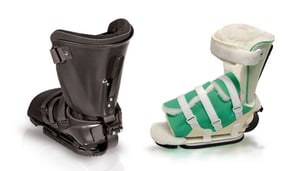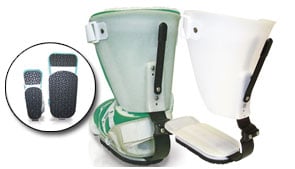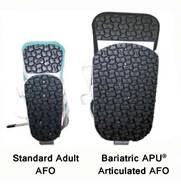Diabetes in America
 More than 100 million people are now living with diabetes or prediabetes in the United States, with 1.5 million new cases diagnosed each year. A serious health concern that isn’t going away anytime soon, diabetes affects all ages from young children and teenagers to middle-aged and older adults, and is the seventh leading cause of death in the country, ranking ahead of influenza and pneumonia and chronic liver disease. A convoluted, progressive disease, complications develop gradually, and if blood sugar or cholesterol levels are not properly regulated, symptoms can accelerate and become disabling or even life-threatening.
More than 100 million people are now living with diabetes or prediabetes in the United States, with 1.5 million new cases diagnosed each year. A serious health concern that isn’t going away anytime soon, diabetes affects all ages from young children and teenagers to middle-aged and older adults, and is the seventh leading cause of death in the country, ranking ahead of influenza and pneumonia and chronic liver disease. A convoluted, progressive disease, complications develop gradually, and if blood sugar or cholesterol levels are not properly regulated, symptoms can accelerate and become disabling or even life-threatening.
Diabetes is not bounded to a distinct organ or tissue. Since the disease affects blood vessels and nerves, any part of the body can be impacted. Cardiovascular disease, nerve, eye and kidney damage, hearing impairment, Alzheimer’s disease, skin conditions and even depression are among the many complications one can suffer from diabetes.
Diabetic Neuropathy and its Impact on the Human Nervous System
One of the conditions mentioned is nerve damage. Referred to as diabetic neuropathy, when there is an abundance of sugar present in the body, the walls surrounding blood vessels that nourish the nerves can be compromised. This indirectly causes a tingling sensation, numbness, burning or pain felt in the fingers or feet and increasingly spreads upward to the hands or legs. If not treated promptly, all sense of feeling in the limbs could be lost.
 Diabetic neuropathy is broken down into four main categories: autonomic neuropathy, mononeuropathy, radiculoplexus neuropathy and peripheral neuropathy, which happens to be the most common type of nerve damage experienced from diabetes. It affects the feet and legs, and can cause serious problems, including ulcers, infections and bone and joint pain. People with severe cases of diabetic neuropathy will have trouble with balance and gait. Typically, sensory information from the plantar surfaces of the feet manages the body’s ever-swaying center of mass, controlled at the ankle. If the ankle lacks the adequate plantar information, the whole kinetic chain is destabilized, making it difficult for a person to stand and walk while significantly increasing the risk of falling.
Diabetic neuropathy is broken down into four main categories: autonomic neuropathy, mononeuropathy, radiculoplexus neuropathy and peripheral neuropathy, which happens to be the most common type of nerve damage experienced from diabetes. It affects the feet and legs, and can cause serious problems, including ulcers, infections and bone and joint pain. People with severe cases of diabetic neuropathy will have trouble with balance and gait. Typically, sensory information from the plantar surfaces of the feet manages the body’s ever-swaying center of mass, controlled at the ankle. If the ankle lacks the adequate plantar information, the whole kinetic chain is destabilized, making it difficult for a person to stand and walk while significantly increasing the risk of falling.
Treatment Considerations: Foot Etiquette and Orthoses
Diet and exercise can prevent and even reverse the onset of diabetes. For individuals with diabetic neuropathy, proper foot care and orthotic treatment help keep symptoms at bay while preventing increased complications. Daily foot checks are highly recommended as the smallest blister, bug bite or foot sore could lead to severe health risks, including foot infection, skin ulcer and even the possibility of amputation. Thoroughly washing and cleaning feet and toes in lukewarm water, trimming toenails, wearing dry socks and comfortable, supportive shoes can reduce pain and lessen the impact of muscle weakness and strengthen stability.
An orthotist plays an important role in the treatment of diabetes, especially with providing relief of insufficient vascularity and neural function associated with diabetic neuropathy. A custom-made or custom-fitted orthosis will be recommended based on many variables to ensure proper support and adequate healing.
Introducing Bariatric AFO Orthosis
It’s widely known ankle foot orthoses (AFOs) and knee ankle foot orthoses (KAFOs) aid in the healing of lower extremity injuries (hip, knee, ankle, toe), as well as serve as a treatment option for chronic pain. However, there may be a misrepresentation the deeper underlying issue is strictly defined to mechanical stability and lower limb assistance. When in fact though, an AFO and KAFO can address sensory deficits, adjusting various gait parameters and can be the most important factor in preventing ulcerations.
 One such orthosis that can slow down the progression of diabetic neuropathy is the Bariatric AFO (Ankle Foot Orthosis). While this type of brace is designed to accommodate larger individuals, including ambulatory and recumbent patients, medical professionals may not realize the Bariatric AFO can be custom-fitted and readily available without the need to take a cast impression. In the past, a patient of larger size would have been fitted for a custom-made orthosis, but that is no longer the case with an Anatomical Concepts, Inc. Bariatric AFO. This means an individual can begin treatment immediately with a prefabricated brace that most likely will cost less than going the route of a custom-made brace.
One such orthosis that can slow down the progression of diabetic neuropathy is the Bariatric AFO (Ankle Foot Orthosis). While this type of brace is designed to accommodate larger individuals, including ambulatory and recumbent patients, medical professionals may not realize the Bariatric AFO can be custom-fitted and readily available without the need to take a cast impression. In the past, a patient of larger size would have been fitted for a custom-made orthosis, but that is no longer the case with an Anatomical Concepts, Inc. Bariatric AFO. This means an individual can begin treatment immediately with a prefabricated brace that most likely will cost less than going the route of a custom-made brace.
This type of device provides a more precise and simplified method of setting the ankle and foot complex in the sagittal plane at plus or minus 30 degrees. The posterior approach requires controlling one upright joint, which lessens the chances of mechanical failure while also eliminating any pressure to the medial and lateral aspects of the malleoli that can be attributed with two joint systems.
Bariatric AFO along with AFOs and KAFOs in general can provide the necessary sensory input that facilitates postural balance and dynamic balance. This helps people with diabetes, specifically, those suffering from diabetic neuropathy, the ability to reduce pain while strengthening mobility and functionality of the lower extremities with orthoses.
 330-757-3569
330-757-3569





